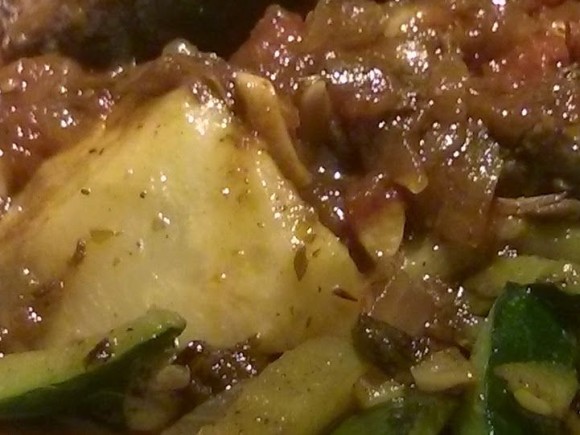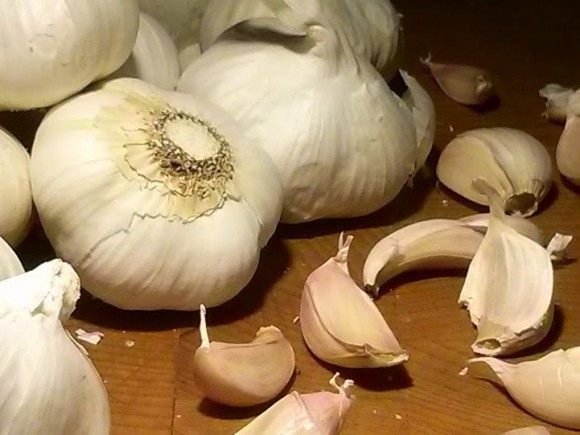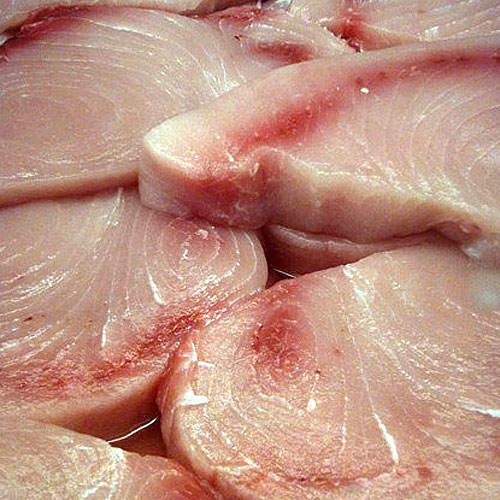 A thrust, a parry, dodge and lunge! To the victor go the spoils; realized in Blood Orange Marinated Swordfish! I scored a couple gorgeous Swordfish steaks at Pure Food Fish, in Pike Market!
A thrust, a parry, dodge and lunge! To the victor go the spoils; realized in Blood Orange Marinated Swordfish! I scored a couple gorgeous Swordfish steaks at Pure Food Fish, in Pike Market!
Swordfish simply adores citrus. An hour, bathing in a blend of blood orange juice, olive oil, salt and pepper leaves you with a remarkably flavorful and tender piece of fish. A quick sear, followed by a short rest and this delightful fish is ready to join your favorite side dishes. The featured picture shows roasted Spring onions, baby artichokes and saffron risotto.
Enjoy! Chef Celinda
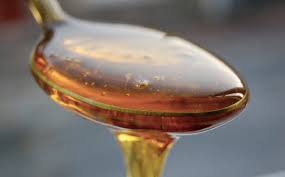
Agave nectar is roughly 1.5 times the sweetness of sugar. Being comprised of fructrose instead of sucrose, agave nectar has a lower glycemic index. In moderation, it is felt to be potentially a healthier option.
You can use agave in any recipe calling for honey. Differing degrees of processing result in varied grades of finished product. You will find light agave to have a fairly neutral flavor. Amber agave contains subtle caramel notes. These flavors increase in darker agave. My experience is mostly with light agave.
When baking with agave, in addition to moisture modifications if it is substituted for sugar, you also need to cook at a lower temperature. Agave browns more quickly.
Play with agave nectar in your kitchen. With it’s ease of addition, due to liquidity, it’s an easy choice when a dish needs just a touch of sweetness to balance other flavors. Light syrups add no flavor.
I understand agave nectar is a dream to caramelize, as well, being already liquid. It works beautifully in vinaigrette or as the sweet in a tantalizing gastrique.
Of course, should you be in the mood… it is incredible in my favorite fresh grapefruit margaritas. Enjoy! Chef Celinda

Maple syrup, the real deal, of course, is an intriguing addition to a variety of dishes.
When purchasing, I like to find Grade B maple syrup. This is darker, richer, and less refined. Grade A is lighter in color and flavor.
“The sugar maple tree (Acer saccharum) grows abundantly in the northeastern part of North America. Sugar maples produce strong, versatile timber and yield maple syrup – both commodities contribute considerably to the economy of the region.” wikiHow has a great article on identifying Sugar Maple trees. I’ve never tried it, but understand it is possible to harvest this beautiful substance in other parts of the country, as well.
The primary ‘sugar’ in maple syrup is Sucrose, yet we don’t fully comprehend the chemistry behind the flavor.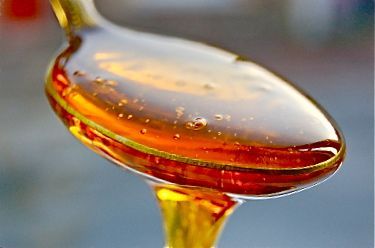 If you are using maple syrup, in baking, be aware that the liquid will cause chemical changes in the overall dish, so you need to make careful modifications. This is true of any liquid based sweet.
If you are using maple syrup, in baking, be aware that the liquid will cause chemical changes in the overall dish, so you need to make careful modifications. This is true of any liquid based sweet.
For use in savory dishes, try maple with Brussels Sprouts, Carrots, Chilis, Corn, Rice, Winter Squashes, Turnips or Sweet Potatoes. I’ve found it to lend subtle, enticing flavors to braised short ribs. It is also a favorite for braising pork belly. For true culinary evil, I have been known to use it in vinaigrettes. Add to salads featuring fresh or dried pears, pecans or walnuts.
Give maple syrup a new place in your kitchen. Don’t relegate it merely to the occasional extravagant breakfast or brunch! This sweet thing likes to play with the Big Boys, too!
Enjoy! Chef Celinda
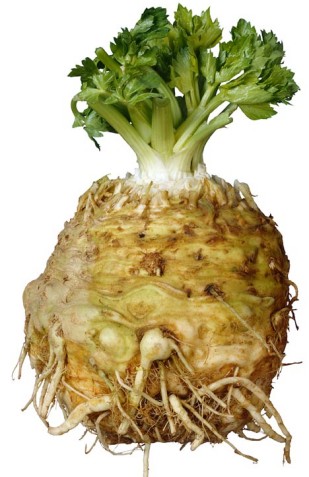 Some perfectly wonderful ingredients simply work at being ignored! Celeriac, or also known as, Celery Root, is one of those ingredients.
Some perfectly wonderful ingredients simply work at being ignored! Celeriac, or also known as, Celery Root, is one of those ingredients.
Yes, it’s kinda homely. The name doesn’t necessarily inspire creativity. Yet, it has a great deal going for it! Celeriac can be prepared pretty much the same way you would a potato; in fact, some diners would never notice you slipped some onto their plate in place of the weight loss inhibiting potato…
I’ve been endeavoring to work with celeriac. It’s lovely raw, grated in a salad, or cook and then puree or mash this healthful treat. The flavors are subtly bitter/sweet with notes of anise, celery, hazelnuts, and/or walnut. Mashed Celeriac has a lovely fluffy texture. The only hard part is peeling it. Get out a nice sharp knife and just go for it. A carrot peeler really isn’t going to touch this hunk of joy!
I decided to try using Celeriac in a braise featuring Italian herbs and wine. Oh, my! The battle was on! Those beautiful, soft, luscious chunks of roasted vegetable brought out the aggressive side to those at my table… So good! Please do try this soon!
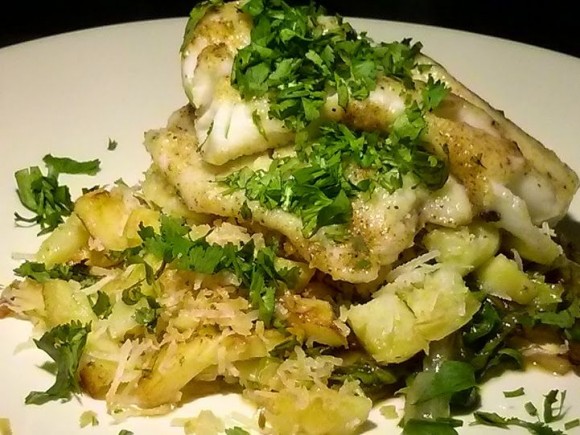
I have a large desire to find myself surrounded by jungles, sand, soft breezes and the lulling sound of Caribbean water lapping the shore… Yeah, I know, not happening, but I can fool my taste buds, for a little while, anyway…
Pretty cod, pan seared with Gluten Free flour, sits atop sweet potato, dusted with a blend of Turmeric, Allspice Berry, Indonesian Cassia, Cumin Seed, Indian Coriander Seed, Ginger Powder, Cardamom Seed, Tellicherry Black Peppercorn, Nutmeg, and Habanero, is then roasted with coconut, jalapeno and lime zest. Fresh lime makes a side of escarole sing sultry tunes. Cilantro lingers for a pungent reminder: The Sun is always shining somewhere in the World!
Enjoy! Chef Celinda
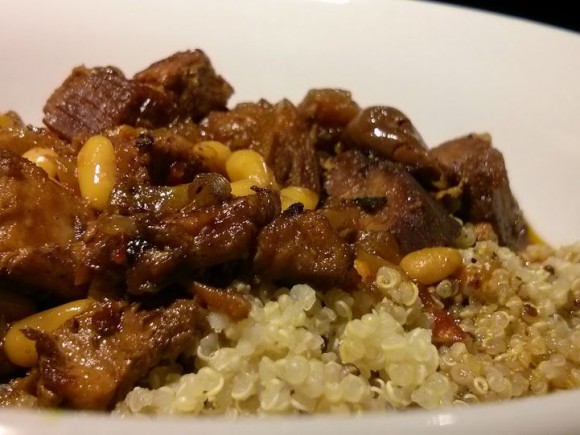
Morocco, a land of romance, camels, sand, and history. A past that colors the food of it’s present with flavors hailing from France, Spain and North Africa.  Braised dishes are very popular in Moroccan cuisine. They are typically prepared in an earthenware pot called a tajine or tagine which is also the name of the dish when complete. The pot can be found painted or glazed. The domed lid traps the rising moisture and directs it back into the food below.
Braised dishes are very popular in Moroccan cuisine. They are typically prepared in an earthenware pot called a tajine or tagine which is also the name of the dish when complete. The pot can be found painted or glazed. The domed lid traps the rising moisture and directs it back into the food below.
The tagine is so pretty and fun, it makes me want to create! But, if you don’t have one, don’t fret, you can obtain the same results with any good braising pot or dutch oven.
Make your braise the same way you normally would. You are merely adding some different ingredients and spices to recreate the flavors of this exotic destination.
The pictured dish above was a quick version. Using left over roasted pork shoulder, I put this tempting creation together in a little over an hour. Most of that time was spent in the oven!
To create mine, saute minced onion with julienne sweet pepper and a hot chili. Add bite sized pieces of pork, or other roasted protein, chopped pitted dates, dried apricots, raisins, pine nuts, lemon jest & juice and stock. Now season with salt, pepper and ras al hanout. This is a North African spice blend. The name is Arabic for “the best of the shop”. Each shop has their own blend and guards their recipe jealously. You can anticipate the flavors of cardamom, cinnamon, cumin, clove, nutmeg, dry ginger, peppercorn, sweet and hot paprika, mace, alspice, fenugreek, chili pepper and dried turmeric. Depending on where the blend hails from, it might also include ingredients like: ash berries, chufa, grains of paradise, orris root, monk’s pepper, cubebs, dried rosebud, fennel seed or aniseed, galangal and/or long pepper. Fun!!
A typical Moroccan tagine is served over cous cous. For a gluten free side, try using quinoa.
Enjoy!! Chef Celinda
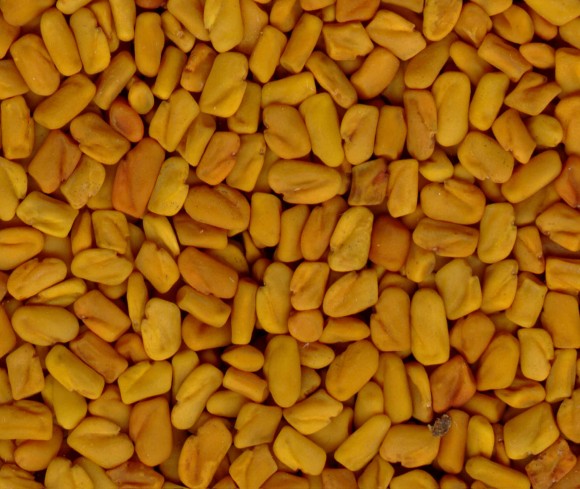 The scent of Fenugreek seeds tend to make me think of Belly Dancers, for whatever reason. It’s beautiful, exotic essence perfumes the very air; transporting me to a place dark with romance and secrets.
The scent of Fenugreek seeds tend to make me think of Belly Dancers, for whatever reason. It’s beautiful, exotic essence perfumes the very air; transporting me to a place dark with romance and secrets.
Fenugreek is used in many varied cuisines: India, Turkey, Persia, Egypt, Eritrea, Ethiopia, as well as an ingredient in traditional Yemenite Jewish New Year dishes.
You have probably encountered this spice in curries. Fenugreek’s fresh or dried leaves are used as an herb and the fresh leaves, sprouts and micro-greens are a delightful addition to your vegetable choices. Fenugreek’s distinctive sweet smell is from the chemical component, Sotolon.
The smell of the seeds is reminiscent of so many things, that it can be a challenge to one’s nose to identify exactly what has your attention so thoroughly. It’s pungent sweet, yet bitter aromas may make you think of burnt sugar, caramel, maple syrup, chocolate, coffee, or even, celery. Actually, it is an ingredient in artificial maple syrup.
Such a broad spectrum makes it a favorite in my spice cabinet. Besides it’s natural affinity to all the ingredients from that exotic side of our globe, it is fun to add in unexpected places. Why not? It’s beautiful with cauliflower, broccoli and cabbage. Try using a titch of toasted, ground seeds in an omelet. Add the same to plain yogurt, with herbs, to create a spectacular sauce for chicken, fish or maybe a lentil soup! Fenugreek also works well with tomatoes, so imagine a sauce featuring toasted ground seeds, garlic, chilies and fresh herbs. Try this sauce with pasta or as a base to roast chicken breasts.
It’s time for me to stop tormenting you with these ideas! Get in the kitchen and cook! Enjoy! Chef Celinda
Since, there aren’t a lot of application of raw garlic, in ‘polite’ society, how do we get around this?
Studies have shown that cutting your garlic, at least ten minutes prior to cooking, allows the allicin to form. Less will be destroyed by the cooking process. An easy trick to improve health! Garlic can easily be sliced, chopped, pressed or emulsified with a food processor. I have a tiny little Cuisinart Mini-Prep Processor, that is fun to use.
Alas, many individuals seem to be sensitive to this ingredient. I have read a number of articles and posts regarding this. If you fall into this category, when dining out, please be polite and patient explaining this need to your server. So many people are simply afraid of potential bad breath and ‘abuse’ the word allergy. This creates a nightmare for those with actual health consequences. Take a look at my pages regarding dining out, for some suggestions.
 There is little more appealing then a slice of fresh roasted Pork Butt/Shoulder, just out of the oven, steaming and dripping all over!
There is little more appealing then a slice of fresh roasted Pork Butt/Shoulder, just out of the oven, steaming and dripping all over!
It is commonly braised and used for pulled pork and a variety of other options. I love to simply roast them. The fat within bastes throughout during the cooking process, adding moisture and remarkable flavor.
You can buy these with or without bones. The bone-in has more flavor, but more challenging when it comes time to slice pretty pieces. If you have a boneless one, be sure to open the flap created from removing the bones and season inside, as well.
I don’t generally brine a butt/shoulder. (and YES, the name is interchangeable for this cut of meat) You certainly can brine, if you have desire and the space.
Once seasoned, if cooking a boneless Pork Butt, you will want to tie it. Otherwise, the top tends to lift up and become dry.
Pork is so very versatile. It lends itself to a wide variety of different cuisines, so when it comes to seasoning, its wide open. If you are cooking a big piece, you may want to keep the seasoning simple, so you can use it to prepare several diverse meals. I get a kick out of my “Deja-Food” machinations. The challenge is to prepare of meal, using ‘left-overs’ while utterly fooling the picky eaters at the table.
If you have the ability to handle a large quantity of Pork Butt, I would recommend going to one of the several Cash & Carry stores. They are all over the Seattle area. These stores are set up for restaurants and other food oriented retail operations, but they are licensed for non-commercial purchases, as well. You will pay half the price per pound that you would spend at a grocery store. You will ALSO have a package containing two full butts. A ‘whole’ butt is from both sides of the pig, so two pieces. I generally cook one whole one, while cutting the other into two units that I freeze for another day. You can cut the first smaller, as well. You are in charge!
Enjoy!! Chef Celinda
Nic’s contribution…
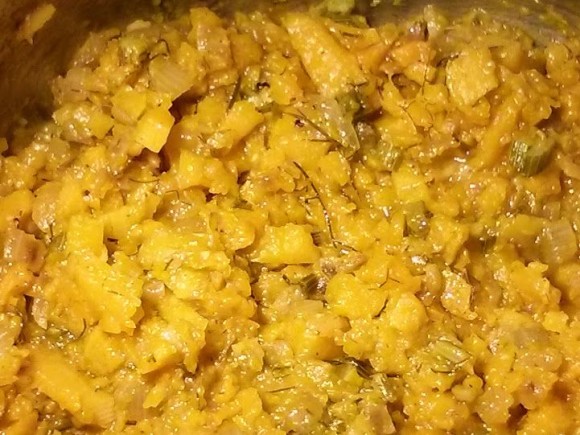 What should I call a dish made with minced butternut squash, fresh minced fennel and onion cooked slowly, while adding small increments of stock? Kinda like risotto, but no rice!
What should I call a dish made with minced butternut squash, fresh minced fennel and onion cooked slowly, while adding small increments of stock? Kinda like risotto, but no rice!
This is one of those sneaky side dishes that will win the show every time. The guests at the table, will all look at you and ask, “What is it? Oh, it is soooo GOOD!”
The essence of the fennel mellows with the subtle sweet squash flavors. Being the first time I played with this concept, I didn’t look to add more then salt for seasoning and a touch of sherry vinegar to balance the sweetness from both vegetables and the onion.
It would do well with hard cheeses, like Parmigianno. Many of the warm spices would be good options, as well as your favorite chilies, cooked into the mixture from the beginning. Fresh herbs can elevate in a large variety of directions. Make your choices based on what you will be serving with this lovely side dish.
Enjoy!! Chef Celinda
